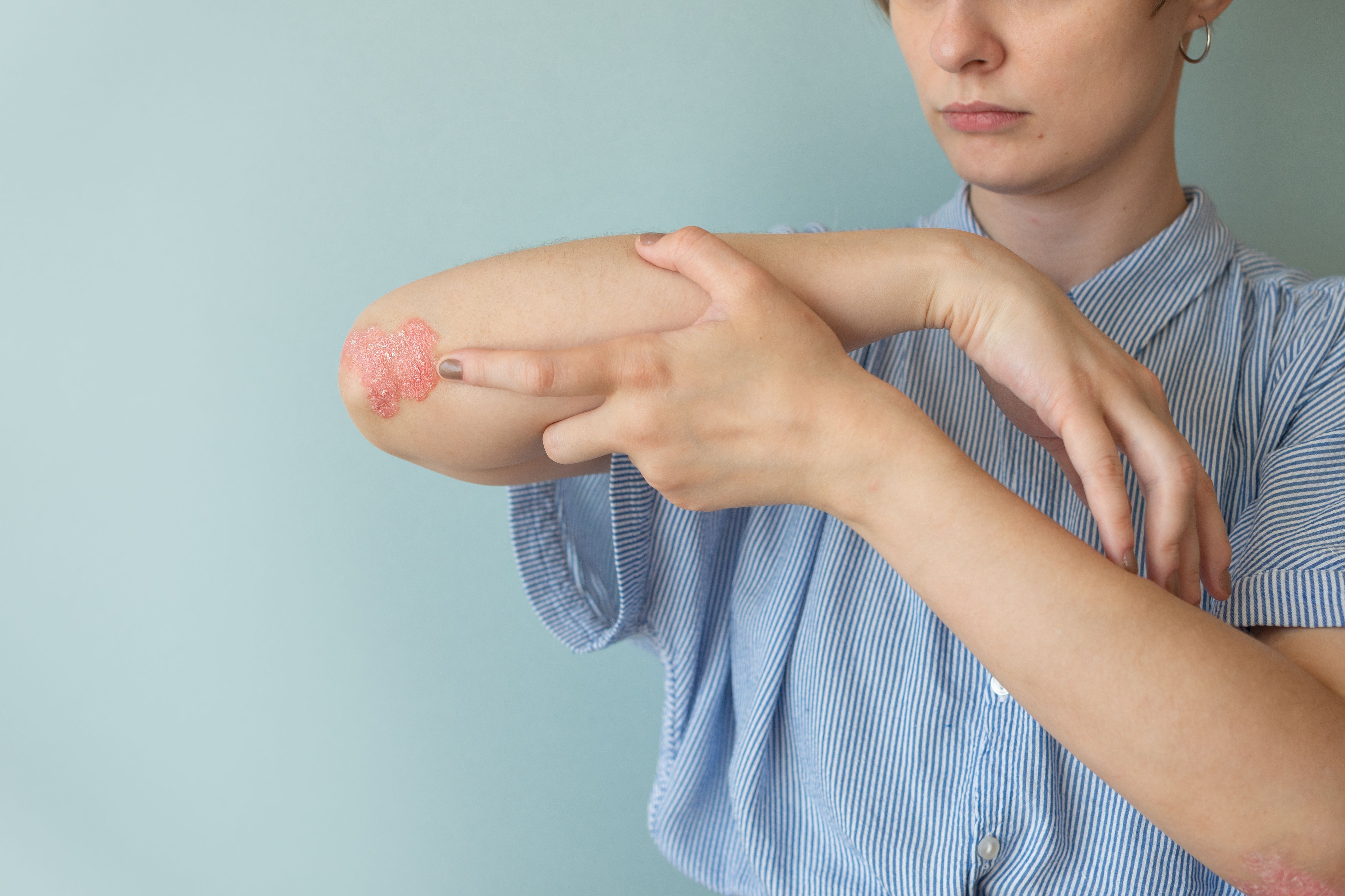Article
Risankizumab Regimen in Plaque Psoriasis Suitable for Active Psoriatic Arthritis
Author(s):
Risankizumab showed linear and time-independent pharmacokinetics in patients with active psoriatic arthritis and was comparable to those with plaque psoriasis.
Risankizumab (Skyrizi, Abbvie) prescribed at the same clinical regimen as approved for the treatment of patients with moderate to severe plaque psoriasis is appropriate for patients with active psoriatic arthritis (PsA). This is according to a study that supported the US Food and Drug Administration (FDA) approval of the anti-interleukin 23 (anti-IL23) monoclonal antibody for the treatment of patients with PsA.

“Steady-state systemic concentrations of risankizumab were achieved by approximately week 16,” Yinuo Pang, PhD, senior research fellow at of AbbVie in Chicago, and colleagues, stated in Rheumatology and Therapy.1 “This clinical regimen for risankizumab achieved robust efficacy responses with no apparent relationship between risankizumab exposure and key safety variables in patients with active PsA.”
Investigators aimed to characterize the pharmacokinetics of risankizumab in PsA compared with psoriasis and evaluate the efficacy and safety exposure–response relationships in PsA.
The population pharmacokinetic analyses included data from 5 clinical studies, with a total of 1527 participants. In 2 of the studies, which were pivotal phase 3 trials, the clinical regimen of risankizumab 150 mg administered subcutaneously at weeks 0, 4, and every 12 weeks thereafter – as approved for the treatment of plaque psoriasis– was compared with placebo in patients with PsA. A population pharmacokinetic model previously developed for psoriasis was refined and fit to data from patients with active PsA. Simulation analyses using the final model were conducted to evaluate the impact of covariates on exposure.
Data from 1407 patients from the phase 3 studies were included in the exposure–response analyses. The analyses for efficacy evaluated the following endpoints, all at week 24: proportions of patients with PsA achieving American College of Rheumatology (ACR)20, ACR50 and ACR70 responses, Psoriasis Area and Severity Index (PASI)75 (for patients with ≥ 3% body surface area psoriasis at baseline), and minimal disease activity (MDA). Analyses for safety evaluated the following variables: adverse event (AE), serious AE (SAE), infection, and serious infection.
None of the covariates evaluated, including baseline albumin, baseline high-sensitivity C-reactive protein (CRP), baseline serum creatinine, and age in the population pharmacokinetic analyses resulted in a clinically relevant impact on risankizumab exposure. For a typical 90 kg patient with PsA, systemic clearance, steady-state volume of distribution and terminal phase elimination half-life were estimated to be approximately 0.31 L/day, 11.1 L, and 26.3 days, respectively. Absolute subcutaneous bioavailability was estimated to be 83.5%.
Risankizumab showed “linear pharmacokinetics in patients with active PsA with pharmacokinetic parameters consistent with those observed in plaque psoriasis,” investigators concluded. Moreover, the same clinical regimen approved in chronic plaque psoriasis provided efficacy across the different clinical endpoints in PsA (ACR20/50/70, PASI 90/100, MDA) with no exposure-dependent increase in safety risks for AE, SAE, infection, or serious infection when compared with placebo.
Reference:
Thakre N, D'Cunha R, Goebel A, Liu W, Pang Y, Suleiman AA. Population Pharmacokinetics and Exposure-Response Analyses for Risankizumab in Patients with Active Psoriatic Arthritis [published online ahead of print, 2022 Sep 30]. Rheumatol Ther. 2022;10.1007/s40744-022-00495-0.




